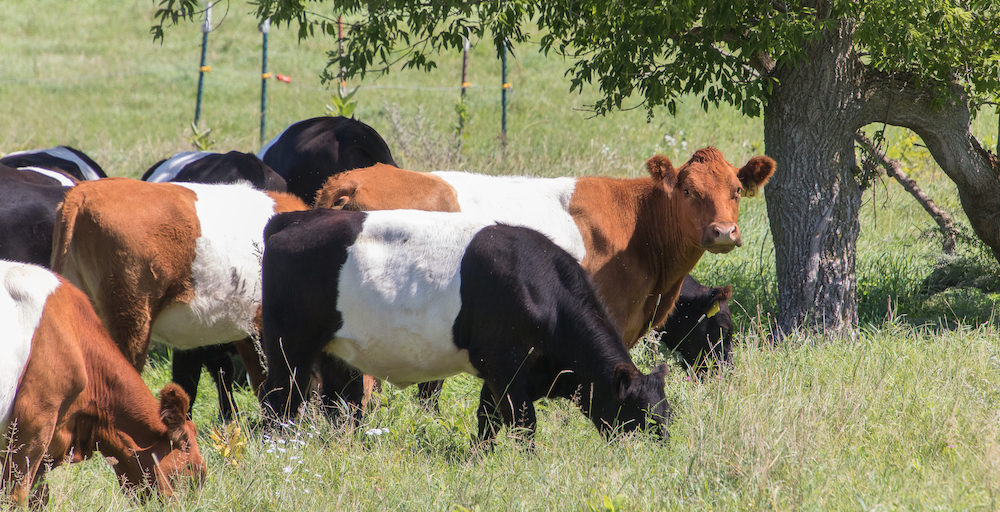The evening was wonderfully cool, and although the light was fading fast, I was sure I had just enough time to get my herbs transplants into the garden.
I had my trowel and garden fork, a little map showing where I’d place the plants, and a kneeling cushion for my knees. I’d sprayed down my jeans against ticks and my ball cap against bothersome mosquitos. “Let’s go, Siggy.” And so my corgi and I climbed a slight rise to a generous plot set aside for medicinal herbs.
I could see the herd just across the field. I’d moved them to a fresh paddock just hours before. And there was a cow, #7, a red-and-white Buelingo, trumpeting across the fence to the next open field. She was calling for her calf. She had been pacing the fenceline for a good half hour, and her call was sounding more and more desparate. Where was her calf? Born just this morning, the little red-and-white heifer was strong and healthy and had immediately followed her mom around on long, wobbly legs.
Where was she?
The cow’ was getting more agitated as the dark edged in.
Up until a couple of years ago, I wouldn’t have been too bothered by the scene. Calves love to slip under fences and walk away from their dams. But last year, we lost two calves to coyotes and I just didn’t want to chance that again.
And so, I got off my knees, dusted off my jeans and headed to the garage for a flashlight.
“Come on, Sig. Let’s find this little girl.”
Fortunately, it was a very brief search. The calf was nestled down in some long grass just a few yards from the fence. It’s amazing how well calves can disappear in high grass. There can be a dozen of them right in front of you, and you’d never know.
It took quite a bit of jostling to wake her and get her on her feet (very young calves can be tough to move) and headed back towards mama. Meanwhile, the entire herd had lined up along the electric fence line, and watched me struggle with the little animal.
I eventurally pushed the calf back under the fence where she was reclaimed by her dam.
By then, it was nearly dark, and Sig and I walked back to the house by flashlight.
The herb transplants will have to wait till tomorrow.
Sylvia

















